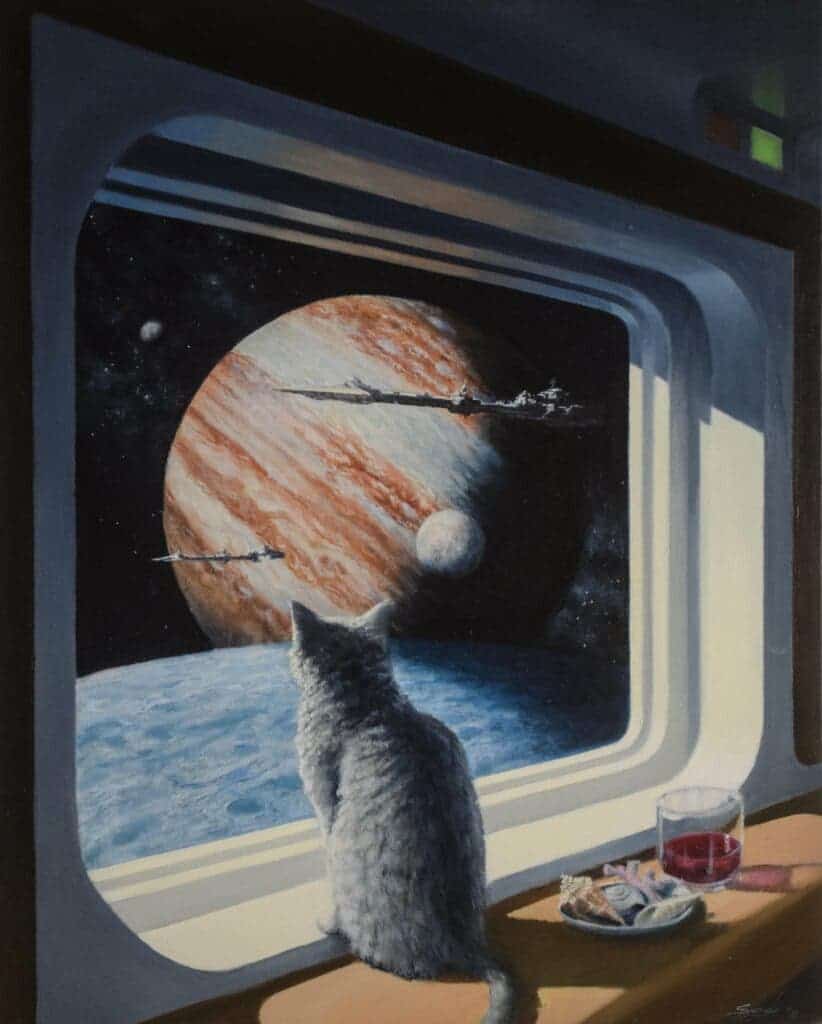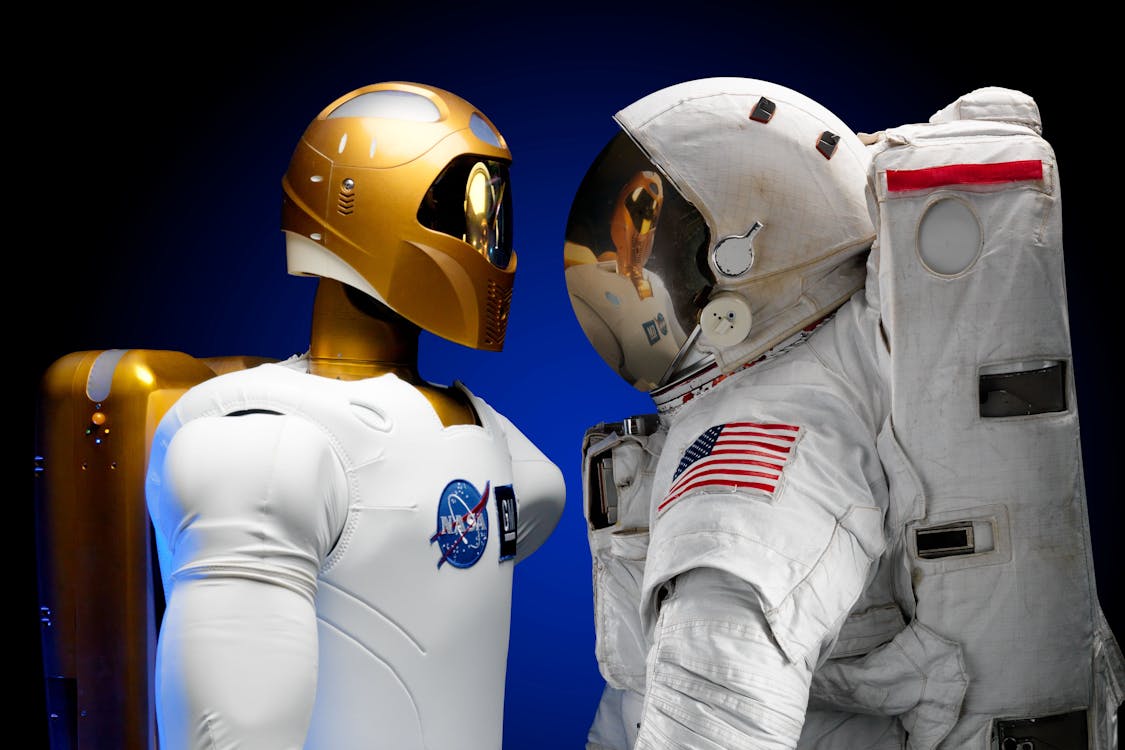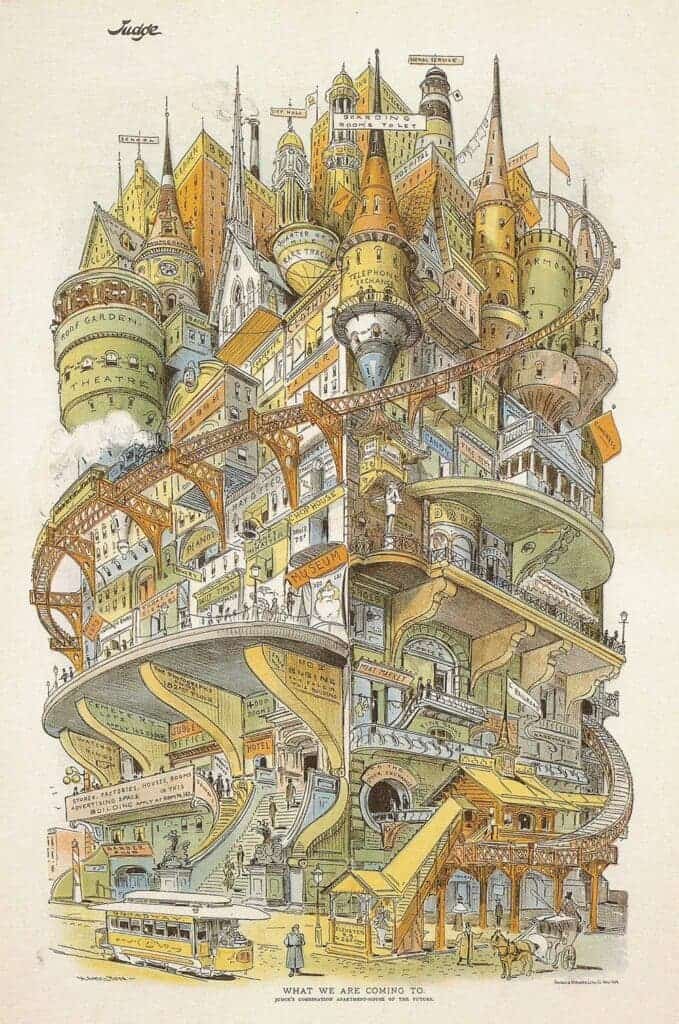Whether it’s flying cars or flying through the stars, retrofuturism has fascinated mankind for decades, and it’s not hard to see why. But we’re still coming to terms with what retrofuturism is and what it means for our society.

What is retrofuturism
Retro-futurism isn’t some complex scientific phenomenon but rather a blend of science, fiction, and art. If futurism is a type of science, forecasting what may come, then retrofuturism is looking back and recalling what that anticipation was like. Think of how people in the 1920s imagined the world a century on.
In a sense, retrofuturism works as a retrospection for our society, but surprisingly or not, it often leads to innovations, creative ideas, and products that you see or hear about in your daily life. A recent example of a retro-futuristic prototype is Tesla’s Neuralink, a brain chip that can augment the human brain. We also see it in architecture, urban design, and inventions such as self-driving cars or space suits.
In retrofuturism, science and technology meet nostalgia and it all comes with a distinctive aesthetic flavor — the type you easily recognize when you come across it. Sometimes, retrofuturism becomes a sort of “faux nostalgia” — a nostalgia for a future that never happened. It’s hard to pin down exactly what is and isn’t retrofuturism, but let’s see what you’d generally find in this current.

Most commonly, retrofuturism can be summarized as the future seen from the past, though sometimes it also incorporates the notion of past seen from the future.
It’s common for many of us to wonder what the future will look like and have things like this pop up into mind. How long do I need to wait for flying cars or a transparent smartphone? Will there be a weekly sale event for cybernetic body parts with heavy discounts? Perhaps, I will be able to rent an apartment on Mars; maybe just on the Moon. Many such weird and exciting speculations about the future also give birth to retro-futurism, a concept that allows us to depict the existence of futuristic technology in an earlier time period.
But what’s interesting is that when we look at retrofuturism art (especially from the past, but sometimes also in modern and real-life examples), it sometimes looks exactly like real life, while other times it looks completely different.

In the broadest sense, retrofuturism is a current present in all sorts of media (books, movies, comics, etc) that imagines a type of future “seeded” from a particular present. It’s all that could have happened if we designed things in a particular way — which is why retrofuturism is more than just an artistic current, it’s a way to envision how different world designs could look like.
The types of retrofuturism
From entertainment to fashion, and technology, the cultural impact of retro-futurism in our world is profound and can be understood through its various sub-genres that are reflected from time to time in the popular media.
Retrofuturism can itself be split into several currents. There are several variants, depending on what era you start from and what theme you focus on. Many of the general trends are owed to the early science fiction works of the likes of Jules Verne or H. G. Wells, as well as the space race of the 20th century. However, retrofuturism has branched out into several different styles, although there’s no official classification.
- Cyberpunk
A dark and dystopian retro-future with all the advanced technology that we can ever imagine but still the world is filled with misery, pain, and chaos because evil organizations control the future. This genre is heavily explored in video games, comics, and popular movies like Tron, Ghost in the Shell, Blade Runner series, etc. Electronic music, funky clothing styles, and low-key fashion accessories based on the cyberpunk theme are quite popular retro-futuristic themes.
- Atompunk
From shiny thunderbird cars to thirst-quenching soda fountains and fashionable chunky glasses, the 1950s were vibrant and full of glamour. Surprisingly, atompunk adds more interesting elements to the retro-futuristic version of the 1950s, the thunderbirds fly and often come equipped with jet propellers, the industries run on clean nuclear power, and the city life is faster than ever with bullet trains.

T-shirts, fashion accessories, and magazines printed in the atom punk theme are adored by fans in the US and beyond. However, the most popular depiction of atom punk is found in Fantastic Four comics, Sean Connery’s James Bond films, and famous cartoon shows such as Dexter’s Laboratory.
- Alternate History
What if Einstein is erased from history? How would our lives have been without the internet? Answering such questions, alternate history has always been a popular genre among writers and especially fiction lovers, it explores changed versions of real historical events and reveals the connected consequences. Hundreds of published books including bestsellers such as Stephen King’s 11/22/63 and Kim Stanley Robinson’s Years of Rice are based on this intriguing idea.
- Steampunk
From aspirin to electric batteries and cameras, the 19th century marks an era that drastically transformed the human lifestyle. This was an incredible time when steam engine trains ran full speed and new industries emerged. Steampunk refers to a future that is based in 19th-century settings with grand steam-powered machines (such as steam aircraft, steam cannons, etc) at play.
The origin and cultural influence of retro-futurism
Although people have likely imagined what the future would look like since the dawn of time, the crystallized retrofuturism current is relatively recent.
According to many digital publications, the concept was first ever discussed in a late 1960s book named Retro-Futurism authored by T. R. Hinchliffe. However, not enough evidence or historical records exist in the present to validate this fact. However, although it didn’t have a name, retrofuturism was still present way before that.

In the year 1983, an ad about Bloomingdale’s jewelry got published in the New York Times. This was no ordinary piece of advertisement because first, it goes like this – “silverized steel and sleek grey linked for a retro-futuristic look”, and second, the Oxford English Dictionary clearly mentions this ad as the earliest recorded use of a term related to the concept of retro-future.
Filmmakers, designers, artists, and game developers have been actively using retro-futurism as a theme for their artistic creations and products. Whether it is Marty McFly’s future visit in 1989’s classic hit Back to the Future II or the launch of the first iPhone in 2007, many fictional and real-world events depict retro-futurism in ways you may never know.
Ultimately, retrofuturism serves as an art current, but it can play a surprisingly important role: by showing us what our world could have looked like but doesn’t, it’s highlighting how our societal expectations and decisions change in time. By looking at different versions of our future, we can get a better idea of what our present is and how our society is shaped. Hopefully, when we take a deep look into that societal mirror, we’ll like what we see.


